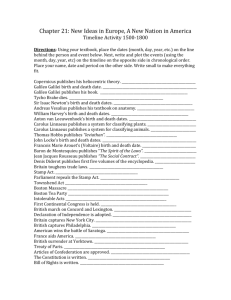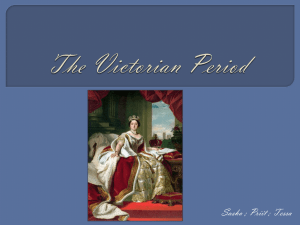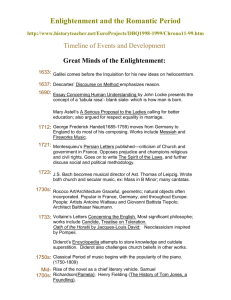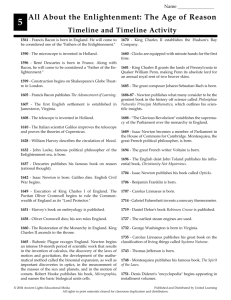Lecture 1
advertisement
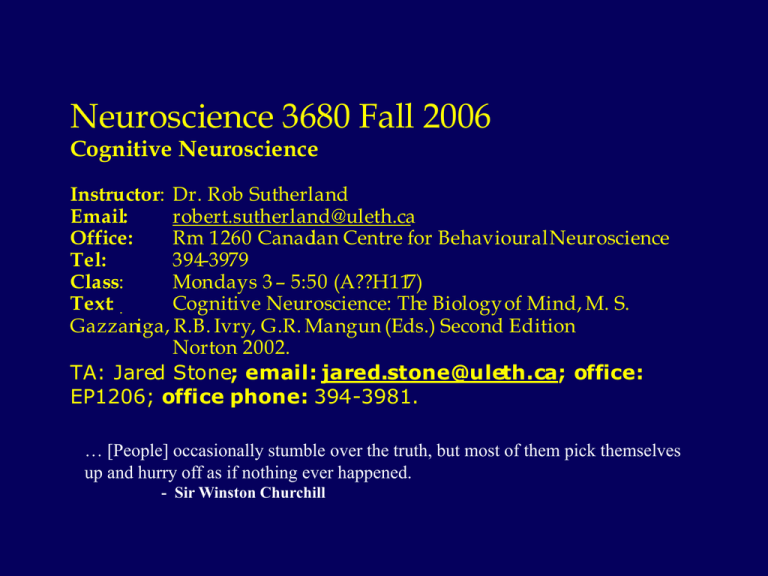
Neuroscience 3680 Fall 2006 Cognitive Neuroscience Instructor: Dr. Rob Sutherland Email: robert.sutherland@uleth.ca Office: Rm 1260 Canadian Centre for Behavioural Neuroscience Tel: 394-3979 Class: Mondays 3 – 5:50 (A??H117) Text: Cognitive Neuroscience: The Biology of Mind, M. S. Gazzaniga, R.B. Ivry, G.R. Mangun (Eds.) Second Edition Norton 2002. TA: Jared Stone; email: jared.stone@uleth.ca; office: EP1206; office phone: 394-3981. … [People] occasionally stumble over the truth, but most of them pick themselves up and hurry off as if nothing ever happened. - Sir Winston Churchill Evaluation: There will b e two tests and an end-of-semester paper, each worth 25%. The paper will be in the form of a research proposal in which a novel experim ent is presented and justifi ed by a brief review of the contemporary lit erature. One journ al article in the area of cognitiv e neuroscience will be presented by each student through the semester. Leading and participating in discussions will contribute to 25% of the fin al grade. The final grading sche me will be as foll ows: A+ (90+), A (85-89), A- (80-84), 70 – 79 will be divided equa ll y a mong B-, B, B+, 60 – 69 will be divided equa ll y a mong C-, C, C+, 50 – 59 will be divided equa ll y a mong D-, D, D+, F < 50. Neuroscience Psychology Cognitive Neuroscience Computational Sciences / Artificial intelligence 1. M.A.B. Brazier. A History of the Electrical Activity of the Brain, London: Pitman, 1961. 2. M.A.B. Brazier. A History of Neurophysiology in the 19th Century, New York: Raven Press, 1988. 3. E. Clarke and K. Dewhurst. An Illustrated History of Brain Function, Berkeley: University of California Press, 1972. 4. E. Clarke and C.D. O'Malley. The Human Brain and Spinal Cord, Berkeley: University of California Press, 1968. 5. S. Finger. Origins of Neuroscience, New York: Oxford University Press, 1994. 6. C.G. Gross. Brain, Vision, Memory. Tales in the History of Neuroscience, Cambridge, MIT Press, 1998. 7. L.H. Marshall and H.W. Magoun. Discoveries in the Human Brain, Totowa; Humana Press, 1998. 8. F.C. Rose and W.F. Bynum. Historical Aspects of the Neurosciences. A Festschrift for Macdonald Critchely, New York: Raven Press, 1982. 9. B.E. Swartz and E.S. Goldenshon. Timeline of the history of EEG and associated fields, in Electroenceph. Clin. Neurophysiol., 106:173176, 1998. • 4000 B.C. to 0 A.D. ca. 4000 B.C. - Euphoriant effect of poppy plant reported in Sumerian records ca. 2700 B.C. - Shen Nung originates acupuncture ca. 1700 B.C. - Edwin Smith surgical papyrus written. First written record about the nervous system. 460-379 B.C. - Hippocrates discusses epilepsy as a disturbance of the brain 460-379 B.C. - Hippocrates states that the brain is involved with sensation and is the seat of intelligence. 387 B.C. - Plato teaches at Athens. Believes brain is seat of mental process 335 B.C. - Aristotle writes on sleep; believes heart is seat of mental process 335-280 B.C. - Herophilus (the "Father of Anatomy"); believes ventricles are seat of human intelligence. 280 B.C. - Erasistratus of Chios notes divisions of the brain 0 A.D. to 1500 177 - Galen lecture "On the Brain" 1316 - Mondino de'Luzzi writes the first European anatomy textbook (Anothomia) 1410 - Institution for the mentally ill established in Valencia, Spain 1500 - 1600 1504 1536 1543 1564 1573 1573 1583 1586 1587 - Leonardo da Vinci produces wax cast of human ventricles Nicolo Massa describes the cerebrospinal fluid Andreas Vesalius discusses pineal gland and draws the corpus striatum Aranzi coins term "hippocampus" Constanzo Varolio names the pons Constanzo Varolio is first to cut brain starting at its base Felix Platter states that the lens only focuses light A. Piccolomini distinguishes between cortex and white matter Giulio Cesare Aranzi describes ventricles and hippocampus 1600 - 1700 1641 - Francis de la Boe Sylvius describes fissure on the lateral surface of the brain (Sylvian fissure) 1649 - Rene Descartes describes pineal as control center of body and mind 1658 - Johann Jakof Wepfer theorizes that a broken brain blood vessel may cause apoplexy (stroke) 1662 - Rene Descartes "De homine" is published (He died in 1650) 1664 - Thomas Willis publishes "Cerebri anatome" 1665 - Robert Hooke details his first microscope 1673 - Joseph DuVerney uses experimental ablation technique in pigeons 1695 - Humphrey Ridley publishes "The Anatomy of the Brain" 1700 - 1800 1717 1736 1772 1774 1776 1776 1786 1791 1794 - Antony van Leeuwenhoek describes nerve fiber in cross section Jean Astruc coins the term reflex John Walsh conducts experiments on torpedo (electric) fish Franz Anton Mesmer introduces hypnosis Sir Joseph Priestley discovers nitrous oxide M.V.G. Malacarne publishes first book solely devoted to the cerebellum Felix Vicq d'Azyr discovers the locus coeruleus Luigi Galvani publishes work on electrical stimulation of frog nerves John Dalton describes color blindness 1800 - 1850 1800 - Humphrey Davy synthesizes nitrous oxide 1803 - Friedrich Serturner isolates morphine from opium 1808 - Franz Joseph Gall publishes work on phrenology 1809 - Luigi Rolando uses galvanic current to stimulate cortex 1811 - Julien Jean Legallois discovers respiratory center in medulla 1817 - James Parkinson publishes "An Essay on the Shaking Palsy" 1820 - Galvanometer invented 1821 - Charles Bell describes facial paralysis ipsilateral to facial nerve lesion (Bell's palsy) 1821 - Francois Magendie discusses functional differences between dorsal and ventral roots of the spinal cord 1800 - 1850 cont’d 1823 - Marie-Jean-Pierre Flourens states that cerebellum regulates motor activity 1824 - Marie-Jean-Pierre Flourens details ablation to study behavior 1824 - F. Magendie provides first evidence of cerebellum role in equilibration 1825 - Jean-Baptiste Bouillaud presents cases of loss of speech after frontal lesions. 1825 - Robert B. Todd discusses the role of the cerebral cortex in mentation, corpus striatum in movement and midbrain in emotion. 1825 - Luigi Rolando describes the sulcus that separates the precentral and postcentral gyri 1826 - Johannes Muller publishes theory of "specific nerve energies" 1836 - Marc Dax reads paper on left hemisphere damage effects on speech. 1836 - Gabriel Gustav Valentin identifies neuron nucleus and nucleolus 1836 - Robert Remak describes myelinated and unmyelinated axons 1837 - Jan Purkyne (Purkinje) describes cerebellar cells; identifies neuron nucleus and processes 1838 - Robert Remak suggests that nerve fiber and nerve cell are joined 1839 - Theodor Schwann proposes the cell theory 1842 - Benedikt Stilling is first to study spinal cord in serial sections 1842 - Crawford W. Long uses ether on man 1844 - Robert Remak provides first illustration of 6-layered cortex 1845 - Horace Wells uses nitrous oxide during a tooth extraction 1846 - William Morton demonstrates ether anesthesia at Mass. Gen. Hospital 1848 - Phineas Gage has his brain pierced by an iron rod 1850 - Augustus Waller describes appearance of degenerating nerve fibers 1850 - Emil Du Bois-Reymond invents nerve galvanometer 1852 - Hermann von Helmholtz measures the speed of frog nerve impulses 1853 - William Benjamin Carpenter proposes "sensory ganglion" (thalamus) as seat of consciousness. 1854 - Louis P. Gratiolet describes convolutions of the cerbral cortex. 1855 - Bartolomeo Panizza shows the occipital lobe is essential for vision 1859 - Charles Darwin publishes The Origin of Species 1861 - Paul Broca discusses cortical localization 1863 - I.M. Sechenov publishes Reflexes of the Brain. 1863 - Nikolaus Friedreich describes a progressive hereditary degenerative CNS disorder (Friedreich's ataxia) 1864 - John Hughlings Jackson writes on loss of speech after brain injury 1865 - Otto Friedrich Karl Deiters differentiates dendrites and axons 1866 - John Langdon Haydon Down publishes work on congenital "idiots" 1866 - Julius Bernstein hypothesized that a nerve impulse is a "wave of negativity" 1867 - Theodore Meynert performs histologic analysis of cerebral cortex. 1869 - Francis Galton claims that intelligence is heredity (publication of Hereditary Genius) 1870 - Eduard Hitzig and Gustav Fritsch discover cortical motor area of dog using electrical stimulation 1870 - Ernst von Bergmann writes first textbook on nervous system surgery. 1871 1872 1873 1874 1874 1874 1875 1875 1878 1878 - Louis-Antoine Ranvier describes nerve fiber constriction George Huntington describes symptoms of a hereditary chorea Camillo Golgi publishes first work on the silver nitrate method Vladimir Alekseyevich Betz publishes work on giant pyramidal cells Roberts Bartholow electrically stimulates human cortical tissue Carl Wernicke publishes "Der Aphasische Symptomencomplex" on aphasias Sir David Ferrier describes different parts of monkey motor cortex Richard Caton is first to record electrical activity from the brain Claude Bernard describes nerve/muscle blocking action of curare Paul Broca publishes work on the "great limbic lobe" 1879 1881 1883 1883 1884 1886 - Wilhelm Wundt sets up lab devoted to study human behavior Hermann Munk reports on visual problems after occipital lobe ablation in dogs Sir Victor Horsley describes effects of nitrous oxide anesthesia Emil Kraepelin coins terms neuroses and psychoses Georges Gilles de la Tourette describes several movement disorders World's first Ph.D. in psychology given to Jastrow at Johns Hopkins 1887 1887 1889 1889 1889 1890 1891 1892 - Sergei Korsakoff describes symptoms characteristic in alcoholics The National Institutes of Health established Santiago Ramon y Cajal argues that nerve cells are independent elements William His coins term dendrite Sir Victor Horsley publishes somatotopic map of monkey motor cortex. Wilhelm Ostwald discovers the membrane theory of nerve conduction Wilhelm von Waldeyer coins the term neuron Salomen Eberhard Henschen localizes vision to calcarine fissure 1894 1895 1895 1896 1896 1897 1897 1897 1898 1898 1899 - Franz Nissl stains neurons with dahlia violet William His first uses the term hypothalamus Wilhelm Konrad Roentgen invents the X-ray Rudolph Albert von Kolliker coins the term axon Email Kraeplein describes dementia praecox Ivan Petrovich Pavlov publishes work on physiology of digestion John Jacob Abel isolates adrenalin Charles Scott Sherrington coins term synapse C.S. Sherrington describes decerebrate rigidity in cat Edward L. Thorndike describes the puzzle box Francis Gotch describes a "refractory phase" between nerve impulses 1902 - Julius Bernstein proposes membrane theory for cells 1903 - Ivan Pavlov coins term conditioned reflex 1905 - Alfred Binet and Theodore Simon have their first intelligence test 1906 - Alois Alzheimer describes presenile degeneration 1906 - Golgi and Cajal-Nobel Prize-Structure of the Nervous System 1906 - Sir Charles S. Sherrington publishes The Integrative Action of the Nervous system that describes the synapse and motor cortex. 1907 - John N. Langley introduces the concept of receptor molecules 1908 - V. Horsley and R.H. Clarke design stereotaxic instrument 1909 - Harvey Cushing is first to electrically stimulate human sensory cortex 1909 - Korbinian Brodmann describes 52 discrete cortical areas 1911 - Allvar Gullstrand-Nobel Prize-Optics of the eye 1911 - Eugen Bleuler coins term schizophrenia 1913 1913 1914 1914 1915 1919 1920 1921 - Edgar Douglas Adrian publishes work on all-or-none principle in nerve Walter Samuel Hunter devises delayed-response test Robert Barany-Nobel Prize-Vestibular apparatus Henry H. Dale isolates acetylcholine J.G. Dusser De Barenne describes activity of brain after strychnine application Gordon Morgan Holmes localizes vision to striate area Henry Head publishes "Studies in Neurology" Otto Loewi publishes work on Vagusstoff 1924 1927 1928 1929 1929 1930 1932 1932 - Charles Scott Sherrington discovers the stretch reflex Chester William Darrow studies galvanic skin reflex in US Walter R. Hess reports "affective responses" to hypothalamic stimulation Hans Berger demonstrates first human electroencephalogram Karl Lashley defines "equipotentiality" and "mass action" John Carew Eccles shows central inhibition of flexor reflexes Max Knoll and Ernst Ruska invent the electron microscope Edgar Douglas Adrian and Charles S. Sherrington share Nobel Prize for work son the function of neurons 1932 1933 1936 1936 - 1936 1937 1936 1937 1937 1937 - Walter B. Cannon coins the term homeostasis Ralph Waldo Gerard describes first experimental evoked potentials Egas Moniz publishes work on the first human frontal lobotomy Henry Hallett Dale and Otto Loewi share Nobel Prize for work on the chemical transmission between nerves Walter Freeman performs first lobotomy in the United States James Papez publishes work on limbic circuit Massachusetts General Hospital has first EEG laboratory Heinrich Kluver and Paul Bucy publish work on bilateral temporal lobectomies James W. Papez develops "visceral theory" of emotion J.Z. Young suggests that the squid giant axon can be used to understand nerve cells B.F. Skinner publishes "The Behavior of Organisms" that describes operant conditioning 1938 - 1938 1938 1943 1944 - 1947 1949 1949 1949 - Albert Hofmann synthesizes LSD Ugo Cerletti and Lucino Bini treat human patients with electroshock John Raymond Brobeck describes hypothalamic hyperphasia Joseph Erlanger and Herbert Spencer Gasser share Nobel Prize for work on the functions of single nerve fiber The American EEG Society is founded A.C.A.F. Egas Moniz-Nobe Prize-Leucotomy to treat certain psychoses G. Moruzzi and H. Magoun publish Brain Stem Reticular Formation and Activation of the EEG Donald O. Hebb publishes The Organization of Behavior: A Neuropsychological Theory. 1950 - Karl Lashley publishes "In Search of the Engram" 1950 - Eugene Roberts identifies GABA in the brain 1951 - MAO-inhibitors introduced to treat psychotics 1952 - A.L. Hodgkin and A.F. Huxley first describe the voltage clamp 1953 - Eugene Aserinski and Nathaniel Kleitman describe rapid eye movements (REM) during sleep 1953 - Stephen Kuffler publishes work on center-surround, on-off organization of retinal ganglion cell receptive fields 1954 - James Olds describes rewarding effects of hypothalamic stimulation 1954 - Chlorpromazine was approved by the U.S. Food and Drug Administration 1956 - L. Leksell uses ultrasound to examine the brain. 1957 - W. Penfield and T. Rasmussen devise motor and sensory humunculus 1960 - Oleh Hornykiewicz shows that brain dopamine is lower than normal in Parkinson's disease patients 1961 - Georg Von Bekesy awarded the Nobel Prize for his work on the function of the cochlea 1963 - John Carew Eccles, Alan Lloyd Hodgkin and Andrew Fielding Huxley share Nobel Prize for work on the mechanisms of the neuron cell membrane 1965 - Ronald Melzack and Patrick D. Wall publish gate control theory of pain 1967 - Ragnar Arthur Granit, Halden Keffer Hartline and George Wald share Nobel Prize for work on the mechanisms of vision 1970 - Society for Neuroscience is founded 1970 - Julius Axelrod, Bernard Katz and Ulf Svante von Euler share Nobel Prize for work on neurotransmitters 1972 - C. Hounsfield develops x-ray computed tomography 1973 - Candace Pert and Solomon Snyder demonstrate opioid receptors in brain 1973 - Sinemet is introduced as a treatment for Parkinson's disease 1973 - Konrad Z. Lorenz, Nikolaas Tinbergen and Karl von Frisch share Nobel Prize for work on ethology 1974 - John Hughes and Hans Kosterlitz discover enkephalin 1974 - M.E.Phelps, E.J.Hoffman and M.M.Ter Pogossian develop first PET scanner 1977 - Roger Guillemin and Andrew Victor Schally share Nobel Prize for work on peptides in the brain 1981 - David Hunter Hubel and Torsten N. Wiesel-Nobel Prize-visual system 1981 - Roger Wolcott Sperry awarded Nobel Prize-functions brain hemispheres 1986 - Stanley Cohen and Rita Levi-Montalcini awarded Nobel prize for their work on the control of nerve cell growth. 1987 - Fluoxetine (Prozac) introduced as treatment for depression. 1990 - U.S. President George Bush declares the decade starting in 1990 the "Decade of the Brain". 1991 - Erwin Neher and Bert Sakmann share the Nobel Prize for their work on the function of single ion channels. 1994 - Alfred G. Gilman and Martin Rodbell share the Nobel Prize for their discovery of G-protein coupled receptors and their role in signal transduction. 1997 - Stanley B. Prusiner awarded the Nobel Prize for the discovery of prions; a ßnew biological principle of infection. 2000 - Arvid Carlsson, Paul Greengard and Eric Kandel share the Nobel Prize for their discoveries concerning signal transduction in the nervous system 2001 - Robert Sutherland assumes Directorship of Canadian Centre for Behavioural Neuroscience Setting the stage for Brain & Mind Important events in history: • Scientific revolution • Dualism v. Monism • Darwin’s Dangerous Idea • The Golden Age of Neuropsychology • Ramon y Cajal • Antecedents of modern era Scientific Revolution Scholasticism vs. Empiricism authority vs. direct observation of the phenomena Mechanism vs. Animism Falsifiability Precision, mathematical tools Openness, peer-review Skepticism Parsimony Dualism vs. Monistic Materialism • Dualism defined • Problems with Cartesian dualism - interaction? - simplicity? • de la Mettrie and Hobbes 1700’s Monistic Materialists Four events in the 19th Century paved the way • Mind-brain identity evidence - phrenology - brain damaged patients - Broca, Alzheimer, Wernicke • Darwin’s theory of evolution
